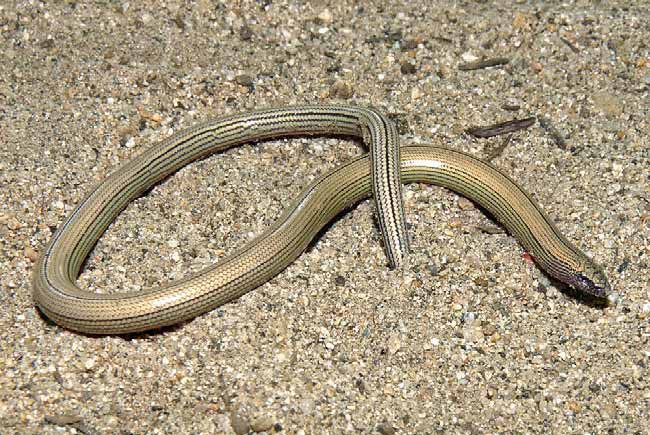Rampant Oil, Gas Drilling Imperils Temblor Legless Lizard
November 18, 2021 - McKITTRICK, Calif.— The Center for Biological Diversity formally petitioned the California Fish and Game Commission today to protect the Temblor legless lizard under the state’s Endangered Species Act.
The Temblor legless lizard is a rare, sand-swimming reptile found in a small area of habitat east of the Temblor Mountains at the southern end of the San Joaquin Valley. The species — which lives in northwestern Kern County and southern Fresno County — is jeopardized by oil and gas drilling throughout its range.
The Temblor legless lizard is currently known to live at only four sites, three of which are within oilfield boundaries and surrounded by extensive oil and gas development. In total, 31 oilfields overlap the lizard’s restricted range and more than 98% of its habitat is open to oil and gas drilling.
“These unique lizards are being dealt a death blow by the fossil fuel industry’s rampant drilling and spilling in the little habitat they have left,” said Shaye Wolf, climate science director at the Center. “They urgently need the protections of the state’s Endangered Species Act to prevent their extinction. Gov. Newsom must also slam the brakes on new drilling to protect California’s wildlife and communities alike from the escalating dangers of fossil fuel pollution.”
Oil and gas extraction threatens the Temblor legless lizard by destroying and fragmenting its habitat, compacting the soil, changing soil moisture levels, removing plant cover, and spilling oil and chemicals. Oil and produced water spills are rampant in the lizard’s restricted range, including at least 20 surface spills since 2019, two of which are currently active.
The International Union for Conservation of Nature (IUCN) recently concluded that oil and gas development could propel the Temblor legless lizard to critically endangered status or extinction in the near future. In 2019 experts on the species recommended listing the Temblor legless lizard under both the California Endangered Species Act and federal law.
The Center petitioned for federal Endangered Species Act protection for the Temblor legless lizard in October 2020. In June the U.S. Fish and Wildlife Service determined that the species may qualify for protection and initiated a status review.
In March the Center joined other environmental and community groups to sue the Bureau of Land Management and Kern County for failing to evaluate the harms and threats to Temblor legless lizards from oil and gas expansion in its restricted range. On Wednesday the Center filed two formal notices of intent to sue the Service for denying or delaying Endangered Species Act protections for the Temblor legless lizard and nine other species.
The Temblor legless lizard is also threatened by urban development, industrial solar development, invasive grasses and non-native wild pigs, and rising temperatures and changing soil moisture caused by climate change.

Temblor legless lizard. Photo by Alex Krohn.
The Center for Biological Diversity is a national, nonprofit conservation organization with more than 1.7 million members and online activists dedicated to the protection of endangered species and wild places.
Source: Center for Biological Diversity








